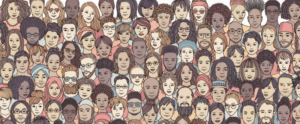
September marks the Substance Abuse and Mental Health Services Administration’s (SAMSHA) 30th Recovery Month! In these past 30 years we have witnessed the expansion of evidence-based clinical drug treatment and a shift towards addressing substance use as a public health issue rather than an individual moral failing. With new evidence and approaches, policy makers, medical professionals, and social workers are combating a decades-rise of drug related deaths: due to the often cited opioid-crisis. But one group is often left out of the conversation: young people.


 I first learned about the concept of procedural fairness within justice systems in the early 2000s while working at the Department of Justice. The concept seems quite intuitive to me yet when observing court practices, I was struck by how many courts don’t naturally incorporate the elements of procedural fairness into their daily work.
I first learned about the concept of procedural fairness within justice systems in the early 2000s while working at the Department of Justice. The concept seems quite intuitive to me yet when observing court practices, I was struck by how many courts don’t naturally incorporate the elements of procedural fairness into their daily work.
 On August 26th Women’s Equality Day is celebrated. Initially chosen in commemoration of the passing of the 19th Amendment that enshrined a woman’s right to vote, Women’s Equality Day has become a yearly celebration of the history of woman’s suffrage as well as a “pledge to continue fighting for equality for women and girls.”
On August 26th Women’s Equality Day is celebrated. Initially chosen in commemoration of the passing of the 19th Amendment that enshrined a woman’s right to vote, Women’s Equality Day has become a yearly celebration of the history of woman’s suffrage as well as a “pledge to continue fighting for equality for women and girls.”
 On July 6, Jeffrey Epstein was arrested and taken into federal custody on multiple sex trafficking charges. In some ways, the Epstein saga runs the risk of reinforcing dangerous stereotypes about human trafficking in the US: If we expect all trafficking victims to be blond haired, blue eyed girls under the age of 18, we will overlook the vast majority of survivors. Survivors of human trafficking (meaning both labor and sex trafficking) are migrant laborers, restaurant workers, and housekeepers. They are men, women, transgender, and gender non-conforming. They are all ages and all races. And their stories are complex.
On July 6, Jeffrey Epstein was arrested and taken into federal custody on multiple sex trafficking charges. In some ways, the Epstein saga runs the risk of reinforcing dangerous stereotypes about human trafficking in the US: If we expect all trafficking victims to be blond haired, blue eyed girls under the age of 18, we will overlook the vast majority of survivors. Survivors of human trafficking (meaning both labor and sex trafficking) are migrant laborers, restaurant workers, and housekeepers. They are men, women, transgender, and gender non-conforming. They are all ages and all races. And their stories are complex.
 Last month, California congresswoman and Democratic presidential candidate Kamala Harris introduced the
Last month, California congresswoman and Democratic presidential candidate Kamala Harris introduced the  Disclaimer: Possible sensitive material. The author discusses the nature of human trafficking situations and means of control.
Disclaimer: Possible sensitive material. The author discusses the nature of human trafficking situations and means of control.